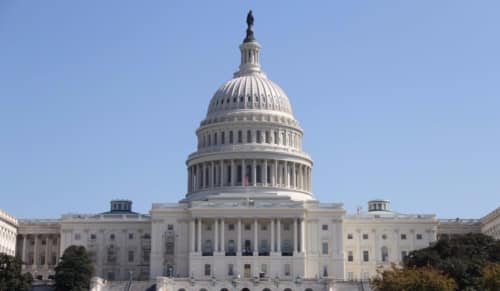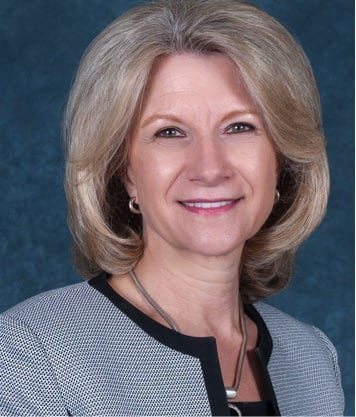https://vimeo.com/219282536
Redefine, Redesign and Reimagine
“Every individual has a gift. It’s important to encourage children to use their gift, and then they will develop grit because they will have experienced success.” – Dr. Gail Pletnick
Dr. Gail Pletnick, superintendent of Dysart Unified School District 89 in Surprise, Arizona, was recently sworn in as the President of The School Superintendents Association(AASA), through July 2018. I had the great pleasure of catching up with Gail to discuss her take on the role of school leadership in this country.
Gail points to the support system of the AASA’s superintendent network across the country and how it has helped her and countless others create opportunities through mentorship. AASA provides consortia that bring together leaders to drive necessary change in schools while setting up students with the skill sets for future success.
The organization not only has a national reach but has expanded globally, making inroads in both England and China. Gail brings years of experience to her position and a history of success from Dysart Unified. In Gail’s words, districts must “redefine, redesign and then reimagine” to bring about effective change in education. It’s a process that looks very promising with Gail in the driver’s seat.
Interview
Dr. Berger: Gail, I enjoyed our last conversation and I know that superintendents from around the country had an opportunity to get together at the AASA conference in New Orleans just a little while ago.
Tell me about the role the community of superintendents play in providing you with a support mechanism and an outlet to learn about best practices and alternative ways to solve problems that you haven’t thought about in your district.
Dr. Gail Pletnick: With AASA, they have really expanded that support system and that network for superintendents. They have launched a number of different consortiums and groups that have been meeting across the United States. It’s been my personal experience that having that opportunity to learn from each other and to support each other through this change process is incredible.
For instance, in Dysart, we have been committed to this redefined, redesigned, and reimagined education. It’s about looking at what trend data is telling us in terms of the skill set that our students will need to be successful when they graduate either from college or in their career or life.
So working with the consortiums, like AASA’s digital content or the personalized learning, we’ve been able to join with other districts and get this work done not only in terms of redefining but also in redesigning and the next step of reimagining.

When we’re driving this change, we also have to be working with our leaders across the United States outside of education, whether it’s our business partners or our elected officials, because there are some changes that have to occur in legislation to support this change. And we have to work with businesses, so they know how to support us better and we know how to better prepare.
We have that ability to reach across the country and even globally because AASA has that reach. We have Canadian partners. We partner with other countries like the work that they’re doing with China. Bringing all of that together and having those resources and ways available for us to connect and network allow us to continue moving forward in these initiatives.
DB: Gail, I’m glad you brought up the exchange or the relationship between public education and political figures, those who are sort of leading the way legislatively. There’s a lot confusion and mistrust around the country in understanding the direction when we look at public education.
What role can districts play translating what’s going on at the state or federal levels to our local communities and parents in a way that allows them to still make decisions that they need to make for their families without providing judgment?
GP: I think that both from the local level all the way to the national level ─ as educators, as leaders in education ─ it is our responsibility to make certain that people are aware of what needs to happen, that we are working collaboratively so that we listen to our business partners, and that we are listening to our community. We must then be able to take that information and make certain that we’re showing that we’re accountable and responsible for the outcomes that we need to have in order to fulfill that commitment that we’re making in preparing students to be successful when they leave our school systems.
It is really about being good listeners, making certain that we take that information and utilize it to drive change. Then we must communicate out what that change needs to be, why, and what help we need or what supports have to be in place from each of those constituent groups.
So when I’m talking with our local level, I’m talking about the businesses in our community and how we’re partners in preparing that work force to continue to support the economic growth in our area.
When we’re talking at the state level, again, it’s our responsibility to be able to communicate how we’re going to be able to help our state to continue to grow economically and how we can also contribute to making Arizona a place where people want to come, live, and raise their families.
And then, of course, it’s at the federal level, too, because I truly believe that our educational system is the background of democracy. If we want an educated populace that will be able to help support what’s happening in this country and be the leaders and the next leaders, we have to have a strong educational system.
That’s what makes the difference between the United States and many of the countries that have not been able to achieve this level of democracy and freedom.
DB: One of the things that came up during my conversations at the AASA National Conference with superintendents and aspiring superintendents there was the lack of minority representation in the superintendency position around the U.S. When we’re translating and trying to help inform our local communities on the ways in which state and federal regulations and policies might impact us that we don’t have enough representation of the very students in our communities.
And I wonder, as a female superintendent, what kind of responsibility do you feel in communicating the opportunity to young girls within your district and to support other female superintendents and superintendents of color around the country so that we have a better representation of the very students that we are in charge of developing?
GP: In our district and districts across the United States we struggle with that equity issue every single day. How do we provide those opportunities for underrepresented populations?
In our school ─ and I know that AASA is doing this as well ─ we do have programs that encourage our females and our minority students to get involved and begin to grow that leadership and to grow that ability to make choices about what’s next for them. There are a number of programs that we have in place.
But you’re absolutely right. We need the support at the state level and the federal level to nurture those programs and to nurture those students, so they have choices and opportunities.
I’m an example. I could have had every label that you could have given a student whether it’s ELL or low-SES ─ all of those of things. However, we didn’t really use labels in the small community where I grew up; everyone was the same. All we kept being told was that you can be or do whatever you want.
That’s what we need to be doing with all of our students from a very young age. But, then, not just say it. Provide those pathways. Provide those opportunities. So we’re constantly growing those students in terms of their own expectations.
The other thing that I really love about personalized learning is it taps into the interests of the students and really helps them to discover what their gifts and strengths are. And I believe every individual has a gift. We don’t all have the same gifts, but we have gifts.

So how do we make sure that we take that and help our students to feel confident?
That’s the other piece. And we call it grit. I used to call it determination, hard work. Call it whatever you want, but you really have to encourage children. Give them the opportunity to use that skill, and then they will develop that initiative. They’ll develop that grit because they’ll have experienced some success.
We can’t be pigeonholing children and not giving them opportunities and assume we’re going to be able to grow them ─ that’s not going to work.
DB: If you’re standing in front of a class of young women in your district who are sophomores in high school and they’re starting to explore what it is they might want to do if they go to college, how do you communicate that education could be a potential path for them whether it’s to be a teacher or it’s to work with companies that service education or to work in policy that supports education or maybe even be a superintendent someday? How do you communicate the opportunity, the flexibility of education, and that there’s not a one-size-fits-all?
GP: I don’t believe in just talking the talk. I believe in walking the walk. It’s one thing for me to say it. It’s another thing for someone to experience it or see it or hear it from someone who has actually walked that walk.
We try to provide a number of pathways. We also try to make certain that children have that opportunity to have conversations and exchanges with people who have made choices that could be their choices as well.
It’s making certain that there are a variety of ways for people to access information about opportunities.
The other thing that I really think we have to start doing is saying to students, “What are your passions? What are your gifts?” Let them identify them. And then, let’s determine how we use it.
It’s not “What do you want to be when you grow up?” because, guess what, some would people have said to me, “Oh, you could be a webmaster” when I was in second grade. I would have assumed that meant getting a broom and taking out all the spider webs that I could find. That job didn’t exist.
I don’t know what some of these students will have an opportunity to get engaged with and find as their life’s work and passion because they may not all exist yet.
So what I’ve got to do is help students find the passion, find the interest, find the gifts ─ and grow them. Then I have to give them opportunities to walk down a path that could lead to that vocation where they get to use that passion and those gifts.
DB: The AASA and superintendents around the country are lucky to have you leading the way. Obviously, the audience can tell the passion that you have and that the grit and the determination stand not only for your own professional and personal path but for those that you’re working with and in support of them.

About Dr. Gail Pletnick
 Dr. Gail Pletnick is President of The School Superintendents Association (AASA) as well as superintendent of Dysart Unified School District 89 in Surprise, Arizona.
Dr. Gail Pletnick is President of The School Superintendents Association (AASA) as well as superintendent of Dysart Unified School District 89 in Surprise, Arizona.
Gail was awarded the 2016 Arizona Superintendent of the Year and is a member of AASA’s digital and personal learning consortia. Pletnick is focused on reshaping the national public education agenda and empowering district leaders through advocacy, networking and PD. Pletnick has been a member of AASA’s governing structure since 2008 and has served on the organization’s executive committee since 2013. She has also been a member of the Arizona School Administrators Association since 2002.
Follow Dr. Gail Pletnick on
This article was originally published on Huffington Post
AuthorDr. Berger is one of many industry education correspondents for the Mind Rocket Media Group, An educator and former school administrator. His video interview work and conversational podcasts have been featured in various media outlets. He often hosts education panel discussions and develops strategic content. As an academic Dr. Berger is a guest lecturer at Vanderbilt University’s Owen Graduate School of Management. A former assistant principal, he has been an adjunct undergraduate professor and developer of online college courses. He is a passionate Detroit sports fan who has also adopted Nashville sports teams as his own.
Contact the Mind Rocket Media Group if you are interested in an industry interview and a placement on EdCircuit.
Further Reading
- East Oregonian – Hermiston Superintendent Maiocco to leave for active duty
- Chicago Tribune – Suburban school leaders worried about funding
- The Hechinger Report – The district where kids beg to go to summer school
